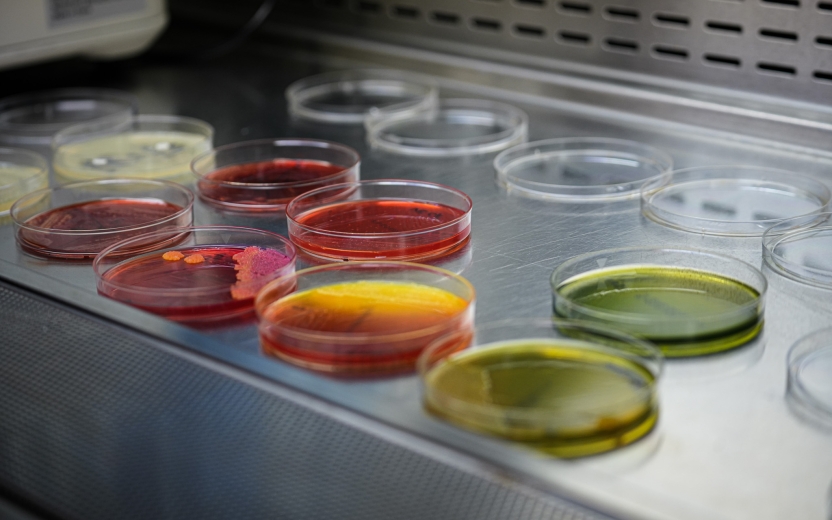Feeding raw food to dogs, often referred to as the raw or BARF (Biologically Appropriate Raw Food) diet, has gained significant popularity in recent years among dog owners who believe it aligns with a dog’s ancestral diet. However, it’s important to understand the scientific evidence surrounding this practice to ensure that it’s beneficial and safe for your pet.
The Riney Canine Health Center, a reputable source for canine health, provides evidence-based advice regarding raw foods for dogs, emphasizing that while some owners swear by the raw food diet, there are potential benefits and risks that must be carefully considered. Here is an overview of their expert advice on raw feeding for dogs.
The Raw Food Diet for Dogs: What It Entails
A raw food diet typically consists of:
- Raw meat: Muscle meat, organs, bones, and raw fish
- Vegetables and fruits: Often pureed for better digestion
- Supplements: Depending on the formula, some owners include supplements like omega-3 fatty acids, minerals, and vitamins.
This type of diet aims to mimic what dogs might have eaten in the wild, focusing on unprocessed foods to promote better overall health.
Potential Benefits of a Raw Food Diet
- Improved Coat and Skin Health: Many owners report that their dogs have shinier coats and healthier skin after switching to a raw diet. The high-quality proteins and fats in raw food contribute to the maintenance of skin health.
- Better Digestive Health: Dogs on a raw diet may experience improved digestion and more consistent bowel movements. Raw foods tend to be more natural and easier to digest than highly processed kibble, leading to better nutrient absorption.
- Increased Energy Levels: Some dogs show increased energy levels and vitality when switched to a raw diet, particularly if they were previously consuming lower-quality kibble.
- Weight Management: Raw diets are often lower in carbohydrates and more protein-rich than kibble, which may help in maintaining a healthy weight and reducing the risk of obesity in dogs.
- Healthier Teeth and Gums: Chewing raw bones can help maintain good dental health by naturally scraping off tartar and plaque, leading to healthier teeth and gums.
Potential Risks and Concerns
While there are benefits to a raw food diet, the Riney Canine Health Center also highlights several risks and concerns that dog owners should be aware of:
- Nutrient Imbalance: One of the main risks of raw feeding is the potential for nutrient imbalances. Dogs require a balanced ratio of protein, fats, carbohydrates, vitamins, and minerals. It can be challenging to provide all of these nutrients in the right proportions through a raw diet, especially if it is not carefully planned.
- Risk of Bacterial Contamination: Raw meat, especially if not stored or handled properly, can contain harmful bacteria such as Salmonella and E. coli, which can lead to infections in both dogs and humans. Proper hygiene during food preparation and storage is critical to minimize this risk.
- Bones and Choking Hazards: Raw bones can pose a choking hazard, and they can also splinter and cause internal injuries or blockages in the gastrointestinal tract. Some bones are harder to digest than others, which could lead to serious health issues.
- Increased Risk of Foodborne Illness: As mentioned, raw food carries an increased risk of foodborne illnesses due to bacterial contamination. Dogs with weakened immune systems, puppies, senior dogs, and pregnant dogs are particularly susceptible to these risks.
- Cost and Time Commitment: Raw diets are often more expensive and time-consuming to prepare than commercial dog foods. They require careful planning to ensure that all nutritional needs are met, and sourcing raw ingredients can be challenging.
- Consulting with a Veterinarian: Given the potential risks and challenges, it’s essential to consult with a veterinarian or canine nutritionist before starting a raw food diet for your dog. They can help ensure that your dog is receiving a balanced and complete diet and can advise on safe feeding practices.
Best Practices for Feeding Raw Foods to Dogs
If you decide to switch your dog to a raw food diet, the Riney Canine Health Center recommends the following best practices to ensure safety and health:
- Work with a Veterinary Nutritionist: Ensure that the raw food diet is balanced and meets your dog’s nutritional needs. A veterinary nutritionist can help guide the formulation of a proper raw food plan.
- Purchase High-Quality Meat: Only use fresh, high-quality, human-grade meat from a reputable source. Avoid meat from unknown or unreliable sources to minimize the risk of contamination.
- Proper Storage and Handling: Always store raw food in the freezer and ensure that it’s thawed properly before feeding. Handle the food hygienically, washing hands, utensils, and surfaces after preparation.
- Avoid Bones that Can Splinter: When feeding bones, ensure they are raw and appropriate for your dog’s size and chewing ability. Avoid cooked bones, as they are more likely to splinter and cause injuries.
- Introduce Raw Food Gradually: Transition your dog to a raw food diet slowly to prevent digestive upset. Start by replacing a small portion of their regular food with raw food and gradually increase the proportion over time.
- Monitor for Health Issues: Keep an eye on your dog’s overall health, including their weight, energy levels, and digestive function. If you notice any adverse reactions, consult with your veterinarian immediately.
Conclusion: Is Raw Food Right for Your Dog?
The decision to feed your dog a raw food diet should be made carefully, with consideration of the benefits and risks. While some dogs thrive on raw diets, others may not, and a poorly balanced raw diet could lead to nutritional deficiencies or health problems.
If you’re considering switching your dog to a raw food diet, the Riney Canine Health Center advises working with a veterinarian or a certified canine nutritionist to ensure that you are meeting your dog’s nutritional needs. Raw feeding can be beneficial for some dogs, but it requires careful planning, proper food handling, and regular veterinary oversight to ensure your dog remains healthy and happy.



